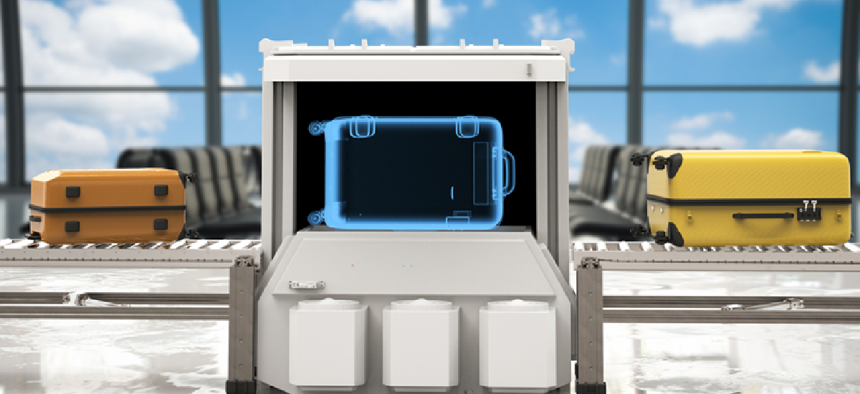TSA ramps up CT scans for carry-on bags

Transportation Security Administration looks to get 2,000 computed tomography scanners into U.S. airports in the next five years.
X-ray systems will eventually provide automatic detection of suspicious items in carry-on luggage at U.S. airports, according to Transportation Security Administration chief David Pekoske, who said the agency has quickly ramped up the deployment of computed tomography systems.
Pekoske called CT a "game changer" for airport security, because the scanners can automatically detect explosives and other dangerous items in passengers' checked bags, as well as provide a three-dimensional image of those items inside carry-on bags.
The new capabilities, Pekoske said, will come online in three to five years as the machines are deployed and their software is upgraded. Eventually, passengers won't need to remove items such as laptops and common containerized liquids from their carry-ons.
"It's a rapid pace for federal procurement. We went from no program at all last year to an almost $100 million contract," he said.
On March 28, the agency signed a five-year, $96.8 million contract for 300 CT systems and ancillary equipment and services over five years with Edgewood, Md.-based Smiths Detection, Inc. The contract, Pekoske said, will be followed in the coming months with another, possibly involving multiple vendors, as TSA looks to get 2,000 of the systems into U.S. airports in the next five years.
The systems under the Smiths Detection contract will begin deployment this coming summer and will be completed in 2020, according to the agency. Pekoske said the airports that will receive the newly contracted systems haven't been named.
TSA said it continues to deploy other CT systems that aren't related to the Smiths Detection contract at other airports to help it develop the most effective algorithms for operations.
Last July TSA said it would expand the use of the scanners and placed CT units from various manufacturers in select airports for field tests in 2018. At those locations, Pekoske said, passengers no longer have to remove electronic devices from their luggage in lanes equipped with the scanners.
At the time, the agency said it wanted to have 145 of the units in airports by the end of fiscal 2019. Pekoske said the latest procurement supports that timeline.
This article was first posted to FCW, a sibling site to GCN.





